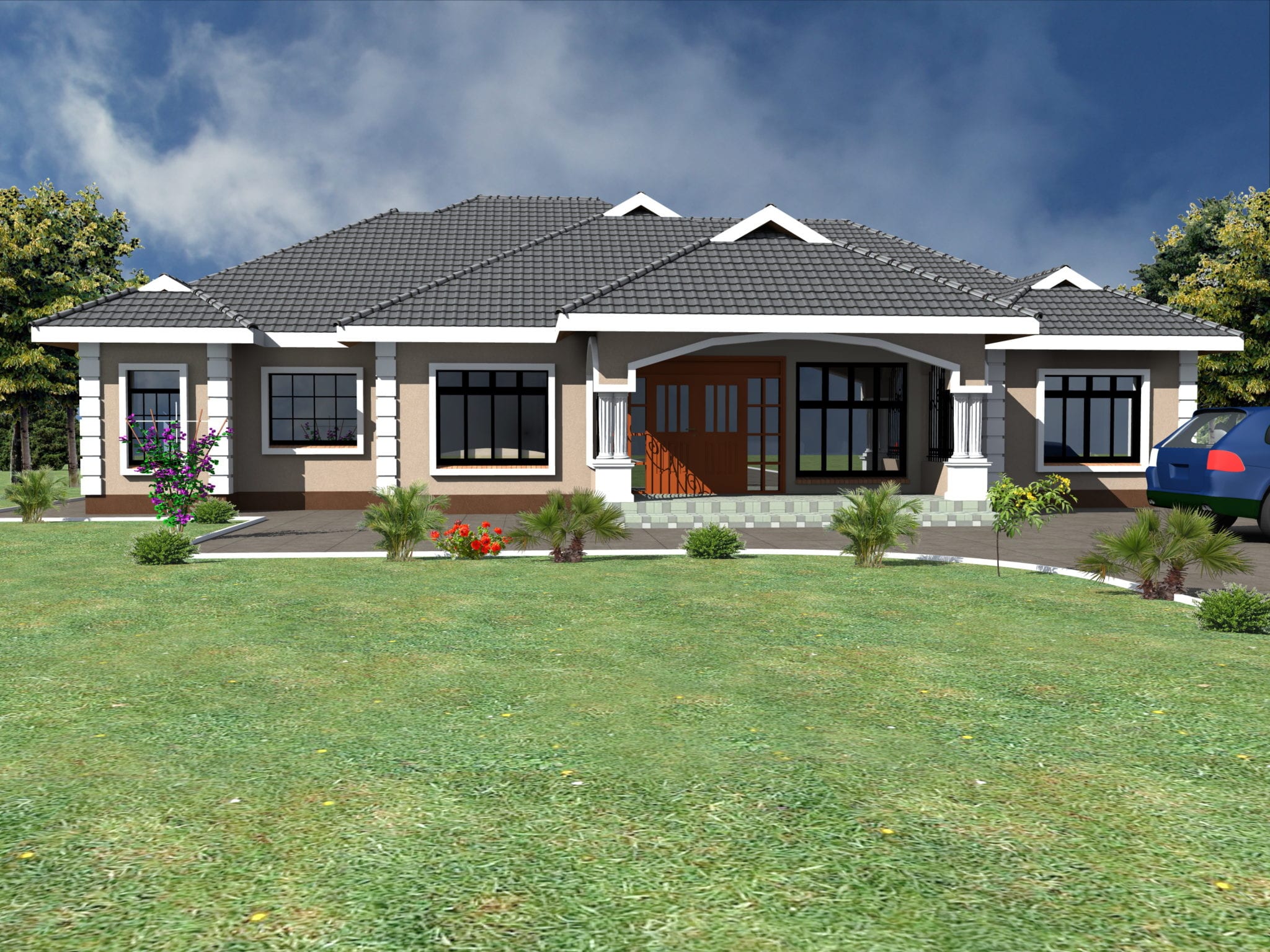Materials and Sustainability: Modern House 4 Bedroom

Modern homes are often synonymous with sleek designs, open floor plans, and a focus on energy efficiency. These features are not just aesthetic choices; they often stem from the materials used in construction and the incorporation of sustainable practices. This section explores the common materials used in modern homes, the advantages and disadvantages of sustainable materials, and the ways modern homes integrate energy-efficient features and technologies.
Common Materials in Modern Home Construction
Modern homes often embrace a minimalist aesthetic, favoring clean lines and open spaces. This architectural style is often reflected in the materials used in construction.
- Concrete: Concrete is a versatile and durable material that is commonly used for foundations, walls, floors, and even countertops. Its strength and longevity make it an ideal choice for modern homes, where clean lines and minimal ornamentation are preferred. Concrete can also be molded into various shapes and sizes, offering flexibility in design.
- Steel: Steel is another durable and versatile material used in modern home construction. It is often used for framing, beams, and other structural elements. Steel’s strength-to-weight ratio makes it an efficient material for supporting large spans and open floor plans. It is also highly recyclable, making it a more sustainable choice than traditional wood framing.
- Glass: Glass is a key element in modern architecture, allowing natural light to flood into living spaces. Large windows and glass walls are common features in modern homes, creating a sense of openness and connection with the outdoors. Glass can also be used for doors, railings, and even interior partitions, adding a touch of elegance and sophistication.
- Wood: While wood is often associated with traditional homes, it still plays a significant role in modern construction. It is commonly used for flooring, cabinetry, and interior accents. Modern homes often feature sustainable wood species, such as bamboo or reclaimed wood, which minimize environmental impact.
Advantages and Disadvantages of Sustainable Materials, Modern house 4 bedroom
Sustainable materials are those that have minimal environmental impact throughout their lifecycle, from sourcing and production to use and disposal.
- Advantages: Sustainable materials offer several advantages, including reduced environmental impact, improved indoor air quality, and enhanced durability.
- Reduced Environmental Impact: Sustainable materials are often sourced from renewable resources, such as bamboo or recycled materials, minimizing the depletion of natural resources and reducing greenhouse gas emissions.
- Improved Indoor Air Quality: Some sustainable materials, such as natural stone or bamboo, are known for their low VOC (volatile organic compound) emissions, promoting better indoor air quality and reducing health risks associated with indoor pollutants.
- Enhanced Durability: Sustainable materials often exhibit excellent durability and longevity, requiring less maintenance and replacement over time, reducing waste and minimizing the need for future resource extraction.
- Disadvantages: Despite their benefits, sustainable materials may have some disadvantages.
- Higher Initial Cost: Sustainable materials can sometimes be more expensive than traditional materials, but their long-term benefits, such as reduced maintenance and energy savings, can offset this initial cost over time.
- Limited Availability: The availability of certain sustainable materials may be limited in some regions, which can affect their cost and accessibility.
- Technical Challenges: The use of sustainable materials may require specialized skills and knowledge, which can be a challenge for some builders and contractors.
Energy-Efficient Features and Technologies
Modern homes are designed to be energy-efficient, reducing energy consumption and minimizing environmental impact.
- High-Performance Insulation: Proper insulation is crucial for reducing heat loss in the winter and heat gain in the summer. Modern homes often use high-performance insulation materials, such as spray foam or fiberglass, to create a more airtight and energy-efficient building envelope.
- Energy-Efficient Windows: Double- or triple-paned windows with low-E coatings can significantly reduce heat loss and gain, improving energy efficiency and reducing heating and cooling costs.
- Solar Panels: Solar panels convert sunlight into electricity, providing a renewable and sustainable source of energy for the home. Modern homes often incorporate solar panels on their roofs, reducing reliance on fossil fuels and lowering energy bills.
- Smart Home Technologies: Smart home technologies, such as programmable thermostats and smart lighting systems, can optimize energy consumption by automatically adjusting heating and lighting based on occupancy and time of day.
- Energy-Efficient Appliances: Energy-efficient appliances, such as refrigerators, washing machines, and dryers, consume less energy, reducing electricity bills and environmental impact.
